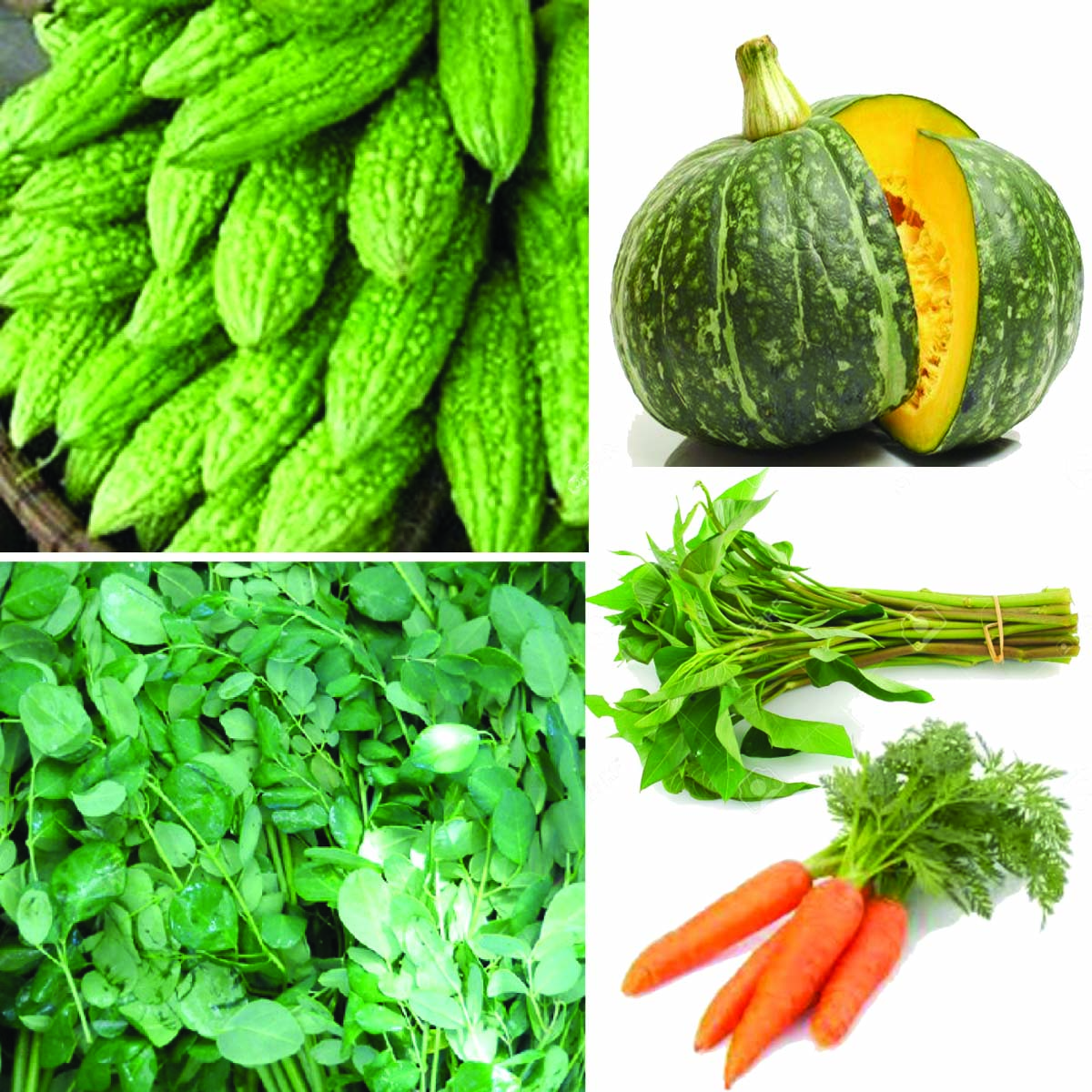A few months ago, we talked about spices that heal. Now let’s move on to discuss healing vegetables.
Ampalaya. Research has shown that ampalaya leaves are effective diabetes cures. Wash the leaves well and chop into small pieces.
Take about six spoonfuls of the chopped leaves and boil in two glasses of water for 15 minutes in low fire.
Important: Do not cover the pan while boiling the mixture. Cool and strain into a clean container. Drink the mixture three times a day before meals.
Ampalaya tops can also be steamed and eaten. Take one-half glassful of the steamed ampalaya tops twice a day.
Ampalaya has other healing properties. Juice squeezed out of fresh ampalaya leaves can be applied on wounds.
For scabies: Warm the leaf over low fire, apply oil on the leaf, and put on affected parts.
For worms: Pound the leaves to extract the juice. Take one teaspoon of the juice with one teaspoon of coconut milk daily.
Aside from its healing properties ampalaya fruit, young leaves and flower of the ampalaya are good sources of calcium, iron, phosphorus, vitamin A and folic acid.
Squash. Squash seeds are used to eliminate tapeworms. Pound about 15-25 shelled seeds and mix with milk or water sweetened with some sugar. Drink the mixture when the stomach is empty. Follow up with a purgative after one to two hours.
Research has also shown that the zinc in the seeds helps prevent prostate enlargement in males.
Nutritive value: Squash sprouts have high calcium, phosphorus, iron and vitamin B content. The flower is rich in vitamin A and calcium while the fruit itself is rich in iron, phosphorus, calcium and vitamin A.
Kangkong. Kangkong is good for constipation. Eat one to two cups of steamed kangkong leaves with your dinner, followed by as much water as needed. Another way is to eat a plateful of fresh kangkong tops that have been slowly fried in one-half teaspoon of oil flavored with a few cloves of garlic.
Kangkong is also an excellent source for iron, calcium, vitamins A, B and C, phosphorus, potassium and iodine.
Carrot. Good for diarrhea. Boil one whole carrot until soft enough to mash. Eat the mashed carrot. It is a good vegetable source of iron, calcium, phosphorus and vitamins A and B.
Celery. It has been found that celery is helpful in high blood pressure. Take one to two fresh celery stalks daily. It is a good source of vitamins A, B, C and E, calcium, phosphorus, iron and potassium.
Malungay. Malunggay is indicated for constipation, rheumatism, scabies, bleeding wounds and to increase lactation.
For constipation: Take one to two cups of cooked leaves for dinner.
Rheumatism: Toast malunggay seeds, pound into powder and apply on the affected part.
Scabies: Pound fresh malunggay leaves and apply the juice on the affected part two to three times a day.
Bleeding wounds: Wash malunggay leaves, pound into a poultice and apply on the wound.
To increase lactation: Eat at least one cup of cooked malunggay leaves everyday.
Malunggay seeds can also be used to clear up murky water while it eliminates about 99 percent of the microbes in the water. Soak the seeds until the water clears up. Malunggay leaves are very rich in calcium, iron, potassium and vitamins A and C.
May these vegie tips heal you keep your health and well-being at its optimum all the year-round.
Categories
Vegetables that heal
